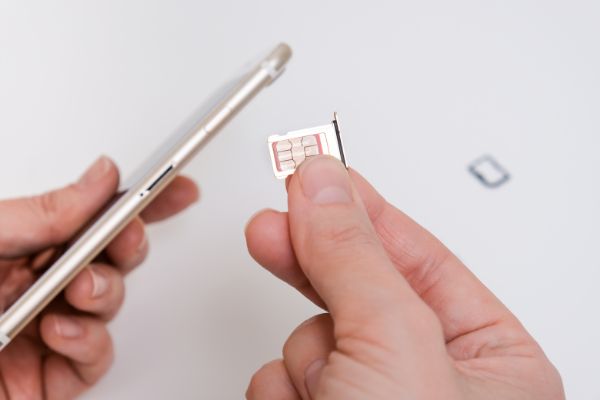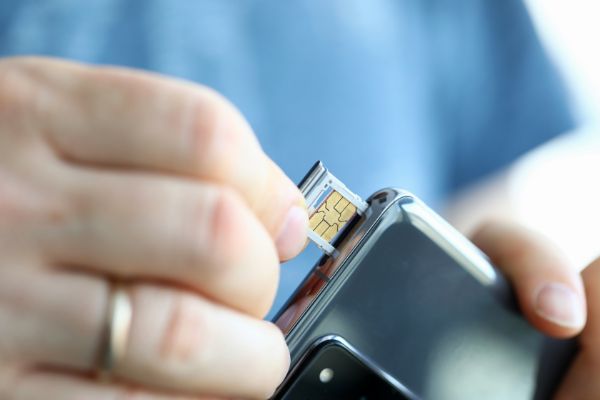Disclaimer: This post may contain affiliate links, meaning we get a small commission if you make a purchase through our links, at no cost to you. For more information, please visit our Disclaimer Page.
A subscriber identity module comes on a small card that goes into your smartphone. These cards store important data that relates to the carrier that provides you with network services. They also store some data about you as a user of that network. For example, the SIM card helps a carrier to know which number is trying to access its services, what kind of contract the number attaches itself to, and what sorts of features it should activate for the benefit of the consumer. Thanks to SIM card data, people can use smartphones to make calls, send texts, and use cellular networks based on the subscription models for which they pay.
You can think of SIM cards as pieces of tech that store information about your subscription to a network, but there are still questions surrounding just how the card itself might interact with your device. We will try to answer a few of those questions here today. Along the way, we’ll talk about whether it is okay to remove a SIM card from an active phone, if you should take it out before trading in an older phone, if it is possible to reactivate a SIM that you’ve chosen to deactivate, and the possibility of an old card having a negative impact on your reception strength. Further, we can discuss some aspects of the factory reset option for phones, and how those kinds of resets might affect the data on your SIM card.
Table of Contents
Can You Take Out a SIM Card While the Phone Is On?
Yes, it is possible to remove a SIM card while the phone is in an active state. If you take the SIM card out, the phone will show you an error message about not finding a SIM card. Consequently, many of the network functions it would otherwise afford you won’t be able to work when the device is in this state. The SIM is the backbone of what provides you with services that your carrier gives to you based on your contract. The ability to make and receive calls, send texts, and do other things you would do with mobile data connect closely to the SIM card that you put in the phone.
If you put that same SIM in another handset, it would recognize the data on it, and you should have access to whatever features you had on your other device, though these features might depend on both your contract stipulations and the capabilities of the operating system. Without any SIM card, the phone doesn’t see that it has any mobile number to access at all. Therefore, you lose the functions that come with the mobile number that you’ve added to a carrier contract.
Part of the reason why the phone loses so much functionality here ties in closely with the concepts of hot or cold booting. Devices like smartphones can go through one of these two boot processes. Cold booting involves checking if all of the basic hardware in a device is present and working as it should. Hot booting just checks for nonessential things. As an example, you can plug and unplug headphones from your smartphone, and all of its functions will continue as they normally would. When you start up a smartphone from a state in which it is off completely, it will do a cold boot to check all the hardware. Part of this involves checking for a SIM. Because the SIM card is part of the cold boot process, you will probably need to restart the phone entirely once you put the SIM back in the active device.
Do I Take Out My SIM Card Before Making a Trade-In?
Typically, it is part of the best practices of trading in or selling a phone to remove your SIM card first. Most companies will consider it a good security measure for users to take. However, some operating systems do not necessarily store sensitive user data on the SIM. Indeed, when you go with a new phone on a different network, the new company should send you a SIM that you will need to activate. This is true even if you want to keep the same number that you had with your old phone or card.
Your SIM card contains some necessary information in order for your device to get on the network the subscriber module ties it to, and it is a way that a user can access the features granted to that card and its contract. In short, it identifies a particular phone number on the network of your choice. While this card should be useless if you move your number to a different carrier, most companies will ask you to remove the SIM as part of the personal data cleanup process before you trade the smartphone in for a different model.
Can a SIM Card Be Reactivated?
Usually, you cannot reactivate an old SIM card. There may be one or two exceptions, but carriers do not tend to allow for this. Part of the reason for the restriction is that most consumers who need to deactivate a SIM do so because they move to a new network. Once that happens, the previous network assumes that you now have an active account with the new provider, and the new company will send you a SIM of its own.
However, it is possible that you are still on the same network you’ve always been on, and you’ve now run into a situation where you need to reactivate an old SIM card. The answer is probably still going to be no, but since you are still with the same carrier, you might run into exceptions. Not all carriers allow for such reactivation. However, some of these networks might have grace periods that do allow for SIM reactivation. Similarly, you can contact your carrier to explain the circumstances surrounding your need, and they may see fit to activate your old SIM once again. We should stress that it isn’t common for carriers to do this, though. Many of them will not even offer such a thing as an option.
Can an Old SIM Card Affect Reception?
The age of a SIM card should not be a factor that alters the signal strength or reception of your phone. However, there are ways that it might do so indirectly. SIM cards spend most of their lives inside the casing of a phone. Although they age, they have relatively good protection from the elements. In theory, there is no reason that a particular SIM cannot last for many years, especially if the phone in question doesn’t take a lot of damage to its internal components.
Like all technology, a SIM card can corrode or otherwise degrade over time, however. As it does so, the card might have trouble connecting to the network at all. Therefore, your phone may lose its ability to get a signal outright. If the degradation of the card happens in a certain way, it is possible that the card could have trouble sending and transmitting data. Theoretically, this might lead to you as the user perceiving a loss in signal strength. Although this is possible, it isn’t likely, and other factors that relate to your carrier can have a greater impact on that signal.
Does a Factory Reset Affect the SIM Card?
No, a factory reset of your phone should not have any impact on the SIM card. We’ve discussed many aspects of the SIM card at length already, but you can think of this piece of hardware as a sort of agreement between your phone and provider. The card stores information about your phone number, its relationship to your provider, and the plan you have with your provider. This would include specifics about the data you have each month with the provider, for example.
The SIM card does not care about any kind of factory reset option here. Such a reset would revert all the phones settings to their default states that they were when you purchased the item. It would also remove apps and data on the phone, but not the same kind of data that goes with your SIM card. When you put a SIM card in a new phone, it will still recognize that it ties itself to your number and gives you data from a particular carrier.
Can You Do a Factory Reset Without the SIM Card?
As we mentioned, the SIM card is like an authorization for your number to use a particular network and its data. Whether that card is in place once you decide to reset your smartphone to its factory default state should not be any kind of factor here. That said, these kinds of resets usually involve the devices restarting themselves. If you’ve chosen to take the SIM out prior to the reset, the phone may ask you about the missing card before you can get mobile access again.
Conclusion
SIM cards are like special passes that store your unique phone number and permissions that allow that number to interact with a carrier. They are essential pieces that provide any smartphone with its ability to make and receive calls or texts, although there are some things you can do without them. For the most part, you can’t reactivate SIMs that providers have deactivated, but you can reset your phone without worrying about the data that your SIM stores for you.


